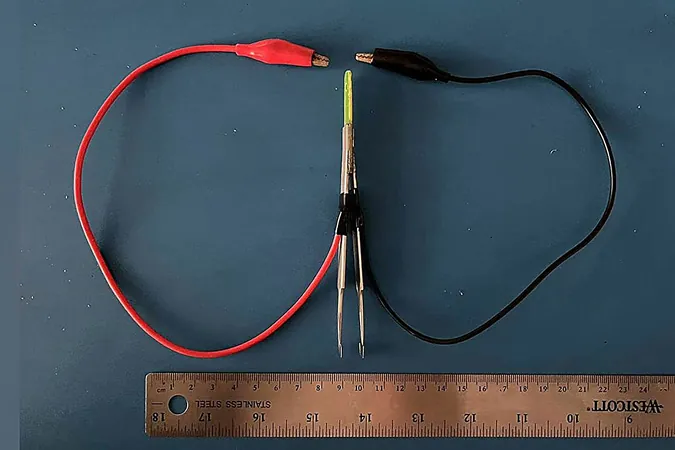
Breakthrough Imaging Technique Unveils Key Issues in Lithium-Metal Batteries
2025-06-14
Author: Arjun
Lithium-metal batteries, a promising advancement in energy storage, have yet to hit the consumer market. These batteries could potentially double the energy capacity compared to current lithium-ion batteries, which power everyday devices. However, their limited recharge cycles have been a significant barrier to widespread use.
Now, a groundbreaking study from the California NanoSystems Institute at UCLA introduces an innovative imaging technique that offers a closer look at lithium-metal batteries during the charging process. Published in the journal Science Advances, this method, known as electrified cryogenic electron microscopy (eCryoEM), captures detailed actions within the battery at a resolution finer than light's wavelength.
The eCryoEM technique promises not just advancements in lithium-metal battery technology but could also bolster U.S. research capabilities, especially as China currently dominates the lithium-ion battery market.
Why This Research Matters
Yuzhang Li, an assistant professor at UCLA and the study's lead author, emphasized the critical nature of this research. With nearly 80% of lithium-ion batteries produced in China, the U.S. faces challenges in the race towards electric vehicles and large-scale energy storage. Lithium metal presents an opportunity to leap ahead, but current cycling stability remains an issue, with the best lithium-metal batteries reaching only about 200 recharge cycles.
eCryoEM: A Game Changer for Battery Research
Traditionally, cryogenic electron microscopy has been limited to analyzing batteries after charging—leaving a gap in understanding real-time electrochemical reactions. Li's team addressed this by freezing batteries in liquid nitrogen while they charged, allowing them to observe changes instantly.
By capturing numerous time-point images, researchers created an animation that tracks the corrosion film’s growth over charging cycles. This step is crucial as it unlocks insights into enhancing battery performance.
Fascinating Findings
The study revealed substantial differences in performance between varying electrolyte chemistries, with implications for battery design. It was observed that the corrosion layer evolves differently, affecting recharge cycles. Surprisingly, while the high-performing electrolyte showed only a slight increase in electron diffusion rates, the growth of the corrosion film varied significantly, marking a threefold difference in initial reactions.
Design Implications and Broader Impact
Findings suggest engineers should focus on improving the reactivity of liquid electrolytes rather than solely on electron diffusion rates. This could significantly impact battery efficiency and longevity.
Moreover, eCryoEM has broader applications beyond batteries, with potential contributions to fields like neuroscience. Li expressed excitement about studying brain cells and their electrical responses, which could lead to breakthroughs in understanding neurological conditions.
The study's collaboration involved co-first authors Chongzhen Wang and Jung Tae Kim, along with various other researchers at UCLA, marking a significant step forward in battery technology and material science.


 Brasil (PT)
Brasil (PT)
 Canada (EN)
Canada (EN)
 Chile (ES)
Chile (ES)
 Česko (CS)
Česko (CS)
 대한민국 (KO)
대한민국 (KO)
 España (ES)
España (ES)
 France (FR)
France (FR)
 Hong Kong (EN)
Hong Kong (EN)
 Italia (IT)
Italia (IT)
 日本 (JA)
日本 (JA)
 Magyarország (HU)
Magyarország (HU)
 Norge (NO)
Norge (NO)
 Polska (PL)
Polska (PL)
 Schweiz (DE)
Schweiz (DE)
 Singapore (EN)
Singapore (EN)
 Sverige (SV)
Sverige (SV)
 Suomi (FI)
Suomi (FI)
 Türkiye (TR)
Türkiye (TR)
 الإمارات العربية المتحدة (AR)
الإمارات العربية المتحدة (AR)